Seniors Picnic at the Scarsdale Pool
- Details
- Written by: Joanne Wallenstein
- Hits: 2129
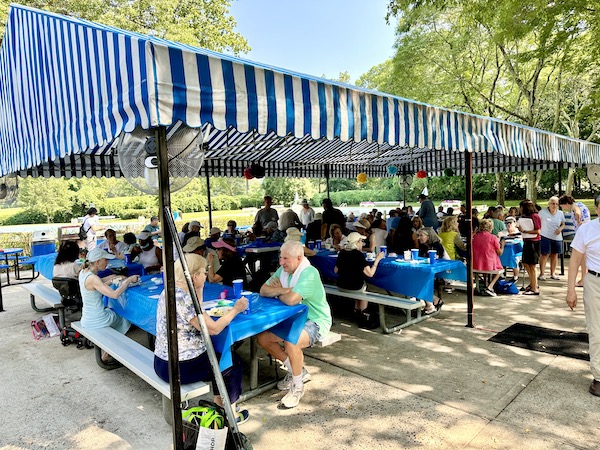
The Scarsdale Seniors want to thank Brian Gray and Sue Oricchio from the Recreation Department, Jene Davis and the pool staff, Stacey Cook from the Scarsdale/Edgemont Family Counseling Service and Mike & his crew at the Scarsdale Pool Concession for the wonderful BBQ.
We look forward to future programs planned by Maida Silver, our new 'Senior Coordinator', resulting from the surveys she solicited from those present.
Aqua aerobics with Alexa, topped off a perfect afternoon.
Carol Silverman, Chair
Advisory Council on Scarsdale Senior Citizens
(914) 725-2459
2023 Health, Beauty & Wellness Fair Final Line-Up
- Details
- Written by: Joanne Wallenstein
- Hits: 2248
 On Sunday, September 10th, 2023, the Scarsdale Business Alliance (SBA) will host its 2nd Annual Health, Beauty & Wellness (HBW) Fair, presented by White Plains Hospital. The event will take place rain or shine in Scarsdale Village from 11am - 3pm. The 2023 HBW Fair will be a fun, festive, and educational day full of activities surrounding key health and wellness resources.
On Sunday, September 10th, 2023, the Scarsdale Business Alliance (SBA) will host its 2nd Annual Health, Beauty & Wellness (HBW) Fair, presented by White Plains Hospital. The event will take place rain or shine in Scarsdale Village from 11am - 3pm. The 2023 HBW Fair will be a fun, festive, and educational day full of activities surrounding key health and wellness resources.
Local businesses and health care providers will exhibit their services and products, offer health screenings, and demonstrate wellness techniques. The HBW Fair Demo Tent will feature fitness classes offered by Rumble Boxing (11-11:45AM), Club Pilates (12-12:45PM), and Orangetheory Fitness (1-1:45PM). From 2-3PM, be sure to stop by and test your hula hoop skills!
Have a health or wellness question? Get expert advice from a physician at White Plains Hospital’s “Ask the Doctor” booth, where free blood pressure screenings will also be provided. The SBA is excited to partner with the Scarsdale Farmers’ Market for this year’s HBW Fair, with a finely curated selection of fifteen vendors.
The HBW Fair will be donating a portion of the proceeds to Scarsdale Edgemont Family Counseling Service (SFCS). “As a counseling agency with a mission to strengthen and support family life and to contribute to the well-being of the community, we are gratified by the steadfast support of the SBA and the many residents and community organizations of Scarsdale, Edgemont and lower Westchester. We believe families matter and that healthy families are the cornerstone of a healthy community,” said Jay Genova, LCSW, executive director, SFCS. "We look forward to celebrating the ongoing health and strength of our community at this fantastic event."
The HBW Fair is a free community event, with a suggested minimum donation of $15 per adult. Kids’ Activity Tickets are available for pre-purchase and will also be available on-site ($5 each, $20 for five tickets, $50 for fifteen tickets).
The SBA is thrilled to offer incredible family fun activities at this year’s HBW Fair. Amazing Amusements will showcase their 30-foot racetrack in the Dine the ‘Dale Tent. Come show off your remote-operated driving skills and participate in multi-car races. A dashboard of the top racing times will be tracked throughout the day, and five winners will receive trophies and an additional prize at the conclusion of the event.
Make sure to test your precision skills by competing in the multiplayer balloon blast game. The winner of each round will receive a prize. And everyone's a winner who participates in any of the fan-favorite classic carnival games, including Ring Toss, Can Smash, Hit the Bucket, Bingo Balls, Ball in a Bowl, and Balloon Pop. Be sure to visit Amazing Amusements’ 50-foot inflatable obstacle course as well as their toddler interactive inflatable play center, and make your memories complete by visiting the interactive photo-booth to take home a strip of printed photos!
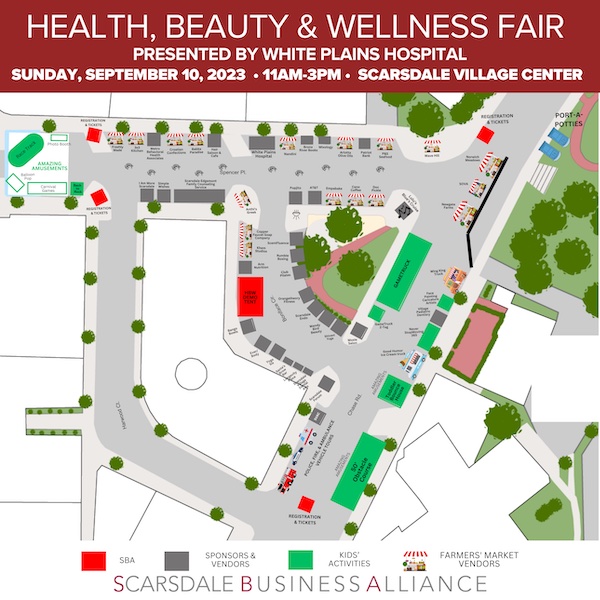

GameTruck will offer gaming sessions inside their truck, and “Just Dance” on their large screen monitor outside. In addition, make sure to try out GameTruck’s new unique and exciting game, ZTAG, that promotes teamwork, communication, physical activity and problem-solving skills among players. ZTAG is a fun and immersive game that provides a unique and memorable experience for players of all ages.
Nicole the Artful Event will provide Face Painting and Caricature Artists, Bach to Rock will offer music activities, and 365NeverStopMoving will engage children with a parachute, throwing targets, jump rope, catch and paddle volley, balance stones and more. There will also be a fire truck, police vehicle, and ambulance on hand for safety tips and tours.
Lulu’s Blue’s Cruise Band will be entertaining the crowds at this year’s HBW Fair. Lead-singer Lucien C. Smith’s sound stretches from Blues, Jazz, Funk, Rock, and Reggae. Lucien has performed and recorded with legends of the industry, including Sean Pelton, Ray Charles, B.B King, Mingo Lewis, Santana, and Al DiMeola.
Thank you to our 2023 HBW Sponsors: Lead Presenting Sponsor: White Plains Hospital; Presenting Sponsors: Amazing Amusements, I Am More Scarsdale, Scarsdale Farmers’ Market, Simple Wishes; Silver Sponsors: AT&T, GameTruck, Hair Saloon & Cafe, Lane Creative Co., Lulu’s Blues Cruise, Metro Behavioral Health Associates, Patriot Bank, Popham Hall/New Park Management, Scarsdale Endo-Arielle Chassen Jacobs DMD PC; Supporting Sponsors: ARM Nutrition, Club Pilates Scarsdale, Mixology, Orangetheory Fitness, Rumble Boxing New Rochelle, ScentFluence, Village Kids Pediatric Dentistry.
Donation tickets and Kids’ Activity tickets are on sale at scarsdalebusinessalliance.com. Tickets will also be available for purchase on-site at the HBW Fair by cash or credit card.
FREE PARKING is available in the Freightway Garage and adjacent outdoor parking lot (72 Freightway) as well as the lower two levels of the Christie Place Garage (64 East Parkway).
PARTICIPATING VENDORS (as of 9/4/23): Amazing Amusements, Anthi's Greek, Arlotta Olive Oils, ARM Nutrition, AT&T, Babka Paradise, Bach to Rock Scarsdale, Badass Bagels, Bango Bowls, Bronx River Books, Cano Coffee, Club Pilates Scarsdale, Croatian Confections, Doc. Pickle, Empabake, Ever/Body, Freshly Made, GameTruck, Hair Saloon & Cafe, I Am More Scarsdale, Ice Cream for Fun, Longevity Place, Lulu's Blue's Cruise, Metro Behavioral Health Associates, Mixology, Moxie Salon and Beauty Bar, Nandini, NeverStopMoving365, Newgate farms, Nicole, The Artful Event, Norwich Meadow Farms, Orangetheory Fitness, P + S Seafood, Patriot Bank, Popojito, Rumble Boxing New Rochelle, Sania's Brow Bar, Scarsdale Edgemont Family Counseling Service (SFCS), Scarsdale Endo-Arielle Chassen Jacobs DMD PC, Scarsdale Farmers' Market, Scarsdale Fire Department, Scarsdale Forum, Scarsdale Police Department, Scarsdale Village Dental Arts, Scarsdale Volunteer Ambulance Corp., ScentFluence, ShivaniYoga, Simple Wishes, Sova Farms, Village Kids Pediatric Dentistry, Wave Hill Breads, Wendybird Beauty, White Plains Hospital, Wing King Food Truck, YogaSix
Event Information: contact info@scarsdalebusinessalliance.com.
Tickets Now on Sale for the 2023 Health, Beauty and Wellness Fair on September 10
- Details
- Written by: Joanne Wallenstein
- Hits: 1812
 On Sunday, September 10th the Scarsdale Business Alliance (SBA) will host its 2nd Annual Health, Beauty & Wellness (HBW) Fair, presented by White Plains Hospital. The event will take place rain or shine in Scarsdale Village from 11am - 3pm. The 2023 HBW Fair will be a fun, festive, and educational day full of activities surrounding key health and wellness resources.
On Sunday, September 10th the Scarsdale Business Alliance (SBA) will host its 2nd Annual Health, Beauty & Wellness (HBW) Fair, presented by White Plains Hospital. The event will take place rain or shine in Scarsdale Village from 11am - 3pm. The 2023 HBW Fair will be a fun, festive, and educational day full of activities surrounding key health and wellness resources.
Local businesses and health care providers will exhibit their services and products, offer health screenings, and demonstrate wellness techniques. Visit the HBW Fair Demo Tent throughout the day to participate in featured fitness classes, workshops and other engaging activities. Have a health or wellness question? Get expert advice from a physician at White Plains Hospital’s “Ask the Doctor” booth, where free blood pressure screenings will also be provided.
The SBA is thrilled to partner with the Scarsdale Farmers’ Market and their finely curated selection of vendors. Additional food merchants will serve a selection of savory and sweet offerings.
This year’s Family Fun Zone will feature a 30’ mini-racetrack with 5 remote-operated cars, a 50’ inflatable obstacle course, a toddler interactive inflatable play center, a multi-player balloon blast, additional carnival games, an interactive photo-booth, a 60’ GameTruck, sporting activities, face painting and caricature artists, and more! There will also be a fire truck, police vehicle, and ambulance on hand for safety tips and tours.
The HBW Fair will be donating a portion of the proceeds to Scarsdale Edgemont Family Counseling Service (SFCS). “As a counseling agency with a mission to strengthen and support family life and to contribute to the well-being of the community, we are gratified by the steadfast support of the SBA and the many residents and community organizations of Scarsdale, Edgemont and lower Westchester. We believe families matter and that healthy families are the cornerstone of a healthy community,” said Jay Genova, LCSW, executive director, SFCS. "We look forward to celebrating the ongoing health and strength of our community at this fantastic event."
The HBW Fair is a free community event, with a suggested minimum donation of $15 per adult. Kids’ Activity Tickets are available for pre-purchase and will also be available on-site ($5 each,
$20 for five tickets, $50 for fifteen tickets). Receive 10% off all Kids’ Activity Tickets purchased through September 4th.
Thank you to our 2023 HBW Sponsors: Lead Presenting Sponsor: White Plains Hospital; Presenting Sponsors: Amazing Amusements, I Am More Scarsdale, Scarsdale Farmers’ Market, Simple Wishes; Silver Sponsors: AT&T, GameTruck, Hair Saloon & Cafe, Lulu’s Blues Cruise, Metro Behavioral Health Associates, Lane Creative Co., Patriot Bank; Supporting Sponsors: ARM Nutrition, Club Pilates Scarsdale, Mixology, Orangetheory Fitness, Rumble Boxing New Rochelle, ScentFluence, Village Kids Pediatric Dentistry.
Donation tickets and Kids’ Activity tickets are now on sale: scarsdalebusinessalliance.com. Tickets will also be available for purchase on-site at the HBW Fair by cash or credit card.
FREE PARKING is available in the Freightway Garage and adjacent outdoor parking lot (72 Freightway) as well as the lower two levels of the Christie Place Garage (64 East Parkway).
PARTICIPATING VENDORS (as of 8/12): Amazing Amusements, Anthi's Greek, Arlotta Olive Oils, ARM Nutrition LLC, AT&T, Babka Paradise, Bach to Rock, Badass Bagels, Bango Bowls, Cano Coffee, Creative Rajni, Club Pilates Scarsdale, GameTruck, Hair Saloon & Cafe, Hiit*Barre, I Am More Scarsdale, Lulu’s Blues Cruise, Metro Behavioral Health Associates, Moxie Salon, Newgate Farms, NeverStopMoving365, Nicole The Artful Event, Norwich Meadow Farms, Orangetheory Fitness, P + S Seafood, Pause to be Present, Popojito, Rumble Boxing New Rochelle, Scarsdale Edgemont Family Counseling Service (SFCS), ScentFluence, Scarsdale Fire Department, Scarsdale Forum, Scarsdale Police Department, Scarsdale Volunteer Ambulance Corp, Sova Farms, Village Kids Pediatric Dentistry, Wendybird Beauty, White Plains Hospital, YogaSix, Wave Hill Breads, Wing King Food Truck.
Event Information and Sponsorship/Vendor opportunities, please contact info@scarsdalebusinessalliance.com for more information.
Some Like it Hot: The Scarsdale Sidewalk Sale Brings Shoppers to the Village
- Details
- Written by: Vivian Zweig
- Hits: 1273
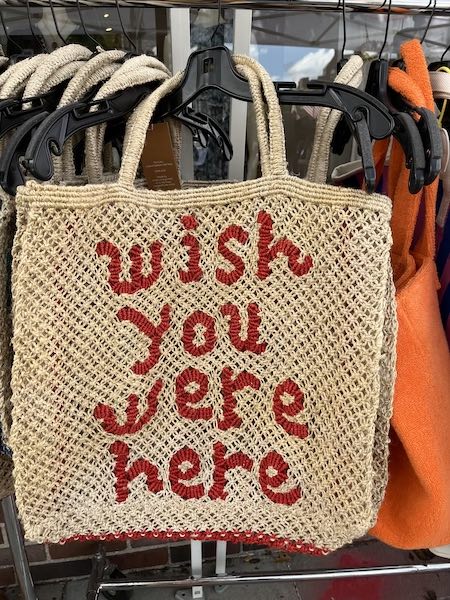 Despite soaring temperatures, Scarsdale residents flocked to the Village for the annual 2023 Summer Sidewalk Sale for fabulous, discounted deals. Each year the Scarsdale Business Alliance, a non-profit organization that supports local businesses, hosts the event to get the community engaged with local stores, restaurants, and businesses. This year the Sidewalk Sale was held from Thursday, July 27th through Saturday, July 29th.
Despite soaring temperatures, Scarsdale residents flocked to the Village for the annual 2023 Summer Sidewalk Sale for fabulous, discounted deals. Each year the Scarsdale Business Alliance, a non-profit organization that supports local businesses, hosts the event to get the community engaged with local stores, restaurants, and businesses. This year the Sidewalk Sale was held from Thursday, July 27th through Saturday, July 29th.
Each day residents visited town favorites—Bronx River Books, Mixology, Rothmans, The Dark Horse—to take advantage of the annual sales. Rothmans, a high-end, family-owned, and operated men’s clothing store, was particularly popular for its extravagant sales. Other businesses that participated in the event include Amanda Arbeter Art, Eye Gallery of Scarsdale, Great Stuff, Learning Express and more.
In addition to supporting local retail stores, residents stopped by the Dine the ‘Dale tent to grab a bite from local restaurants. On each day of the sale, the Village was proud to host one of three food vendors: Popojito, the WingKing Truck, and the YumBro Food Truck. Popojito served chicken kabobs and a variety of delicious tacos; the WingKing Truck—one of Westchester’s new food trucks—sold wings, fries, and chicken fingers; and the YumBro Food Truck exposed Scarsdale to an assortment of Asian Fusian.  Christmas in July at La Dentelliere
Christmas in July at La Dentelliere
On Saturday, July 29th, families visited the tent to enjoy various family-friendly activities, including a balloon artist, face painting, caricature art, and musical activities with Bach to Rock, a Music School based in Mamaroneck. Bach to Rock will be having a grand opening in their new Scarsdale location in mid-August. At the end of the event, Scarsdale residents walked away with not only new goods but a sense of anticipation for next year’s Summer Sidewalk Sale.
Photos by Emily Gilman
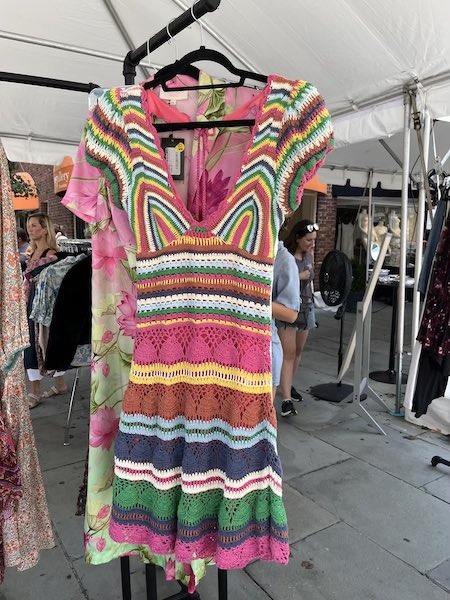 Fashion forward!
Fashion forward!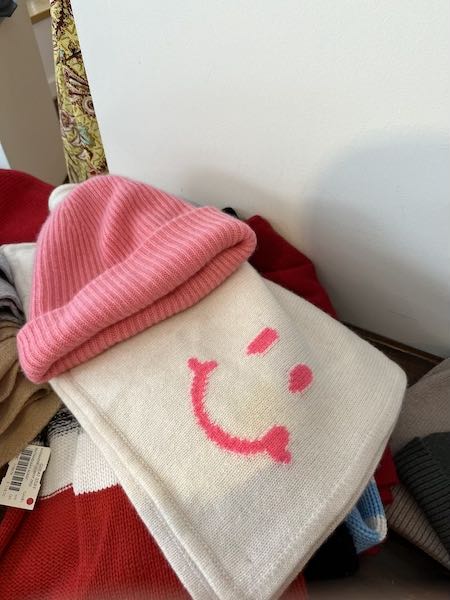 Everything pink is in.
Everything pink is in. Your summer fur?
Your summer fur?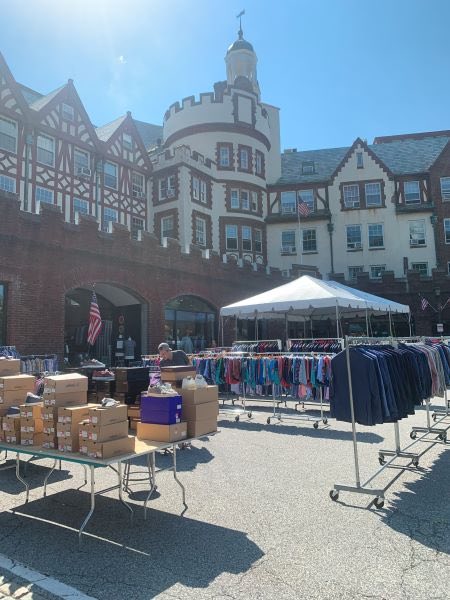 There were plenty of deals to be had at Rothmans
There were plenty of deals to be had at Rothmans
Sidewalk Sales July 27-29 in Scarsdale Village
- Details
- Written by: Joanne Wallenstein
- Hits: 1628
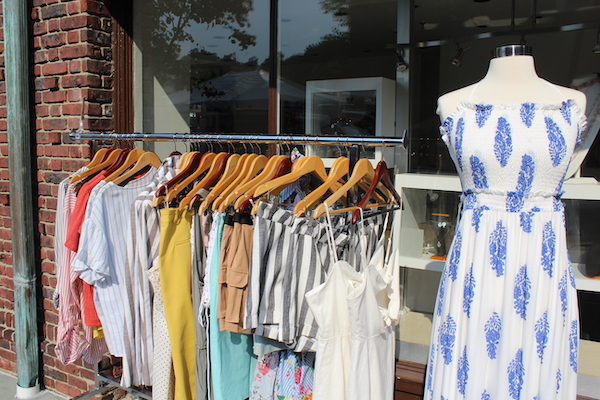 The Scarsdale Business Alliance (SBA) is thrilled to announce that the 2023 Summer Sidewalk Sale will take place Thursday, July 27th through Saturday, July 29th in Scarsdale Village, from 10am-6pm, rain or shine.
The Scarsdale Business Alliance (SBA) is thrilled to announce that the 2023 Summer Sidewalk Sale will take place Thursday, July 27th through Saturday, July 29th in Scarsdale Village, from 10am-6pm, rain or shine.
Visit the Village center often during this not-to-miss annual event to take advantage of the fabulous sales and discounted deals from your favorite retail stores and outside vendors. In between all the shopping, be sure to stop by the Dine the ‘Dale tent and support our local restaurants.
On Saturday, July 29th, enjoy FREE family fun activities in the Dine the ‘Dale Tent, between 11am - 2pm, featuring a balloon artist, face painting, caricature artist, musical activities and MORE!
We look forward to offering the community incredible shopping deals, delicious dining options, and fun activities, all while supporting our local retail merchants.
8 hour pay-as-you-go Pango parking is available daily in the Christie Place commuter garage (64 East Parkway), with free parking on the weekends for Village consumers.
For more information, visit www.scarsdalebusinessalliance.com or email info@scarsdalebusinessalliance.com.
Participating Vendors as of July 17th: Amanda Arbeter Art, Bach to Rock, Bango Bowls, Bronx River Books, Cutco Cutlery, Eye Candy Florals, Eye Gallery of Scarsdale, Genesis of White Plains, Great Stuff, Greenwich Med Spa, Hiit*Barre, Holsten Jewelers, I Am More Scarsdale, Jewels By Joanne, Korth & Shannahan Painting and Carpentry, La Dentelliere, Learning Express, Lightbridge Academy of Scarsdale, Mixology, Orangetheory Fitness, Pamela Robbins, Pause to be Present, Rothmans, Scarsdale Community Baptist Church, Scarsdale Flower Boutique, ScentFluence, Second Edition NY, The Dark Horse, The Rotary Club of Scarsdale, Timo & Violet, Whigstock Studio, YogaSix










